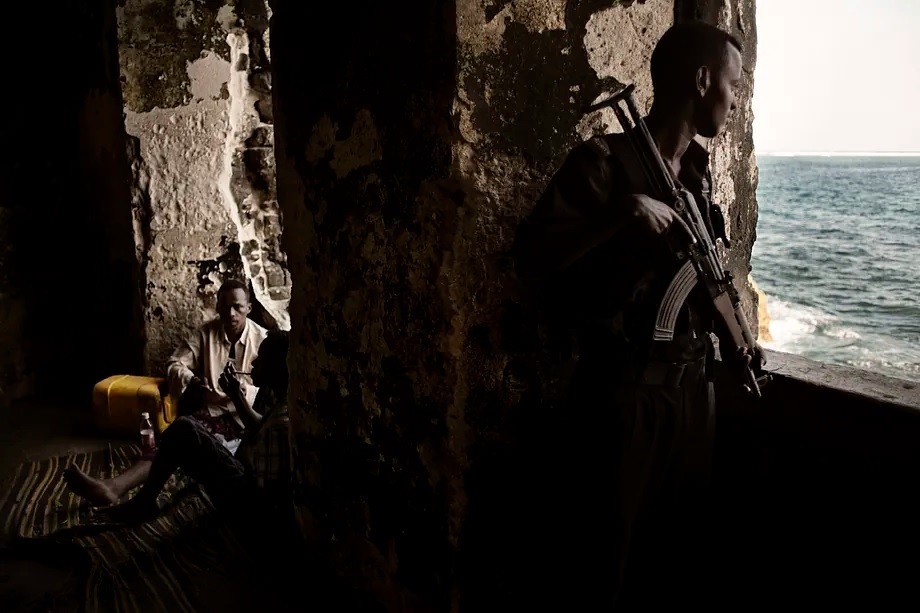In Somalia, there is a more reliable indicator than any intelligence report, a data point that shows the levels of security in Mogadishu, one of the most precarious and violent cities in the world: when hotel prices rise, especially those few that accommodate Westerners, things are starting to go wrong. In 2010, one night's reservation cost $700 and included a security service with a bulletproof vest, helmet, and an escort of eight militiamen armed to the teeth. This month, the price has gone from $35 to $150 and rising. Following this trend, when the records of 2010 and 2011 are surpassed, it will mean that the city has become a hornet's nest.
Al Shabab, one of the longest-standing and most powerful tentacles of Al Qaeda, is gradually returning to the place from which it was uprooted in August 2010. From their positions in the Bakara market, where the two US Blackhawk helicopters fell in 1993, Al Shabab members moved to the desert to engage in the lucrative business of kidnappings, while continuing to attack the capital with sporadic offensives and suicide bombings. The fact that Al Shabab left the city streets did not prevent the complete fragmentation of the city. The most powerful clans divide the spoils of the state, while a transitional government, locked behind the walls of Villa Somalia, tries to bring some order to the chaos.
Since 2019, the radical group has been reclaiming lost territories with a mix of military strategy and terror. But the advances in 2025 are very concerning: since February, Al Shabab has reached the regions of Jowhar, Adan Yabal, and Adale in Middle Shabelle and Afgooye in Lower Shabelle, along with Bulo Burde and key areas east of the Shabelle River in Hiran. They are recruiting more and more young people and have the time and places to train them. Now their militias, no longer resembling shepherds in sandals but well-equipped soldiers, surround the capital, defended by a precarious national army and some international mercenaries with a lot of experience but questionable commitment. Al Shabab has revived and come back much stronger.
The situation resembles that of Afghanistan in 2021: a weak and poorly managed state gradually losing international support and crumbling in the face of the radicals' advance, much more motivated and careful in winning over the civilian population. The example can be seen in the regions of Hirshabelle and Galmudug, retaken in 2022 by the transitional government supported by the Macawiisley clan, opposed to the Al Qaeda faction.
The Somali government promised to improve security and basic services, but never fulfilled its promise. Civilians, who initially applauded the liberation of these regions and the end of depending on abominations like Sharia law, changed their loyalties thanks to the militia's work in exploiting local grievances and co-opting clan elders. Today, those areas are once again under Al Shabab's control. In August 2023, Al Shabab captured three Somali military bases in Oswein, north of Mogadishu, killing between 150 and 178 fighters, clearing the direct path to the capital.
The morale of the Somali army is at an all-time low. Its officers have lost confidence in their soldiers since Al Shabab infiltrates militants into their ranks. Their resources depend on the African Union troops and are increasingly dwindling, with the corruption of their generals being scandalous. There are voices within Somalia that believe Al Shabab should be integrated as a political force in Parliament before the situation definitively spirals out of control.
"There is no military solution that would allow the Somali government to defeat Al Shabab in the current conditions," writes analyst Ashley Jackson in War on the rocks. "Cuts in US aid under the Trump Administration have reduced the operational capacity of the Somali army," recalls The Washington Post.
The truth is that Mogadishu had changed for the better in recent years. With security came investments, especially from Turkey and China. The entrepreneurial Somalis lifted businesses in a city that was once ashes. Restaurants, beachfront cafes, hotels like fortresses, paved streets, and even traffic lights.
The food insecurity, one of the major issues in arid Somalia, had decreased, but war could bring hunger back. Everything could be reduced to rubble in a moment.
